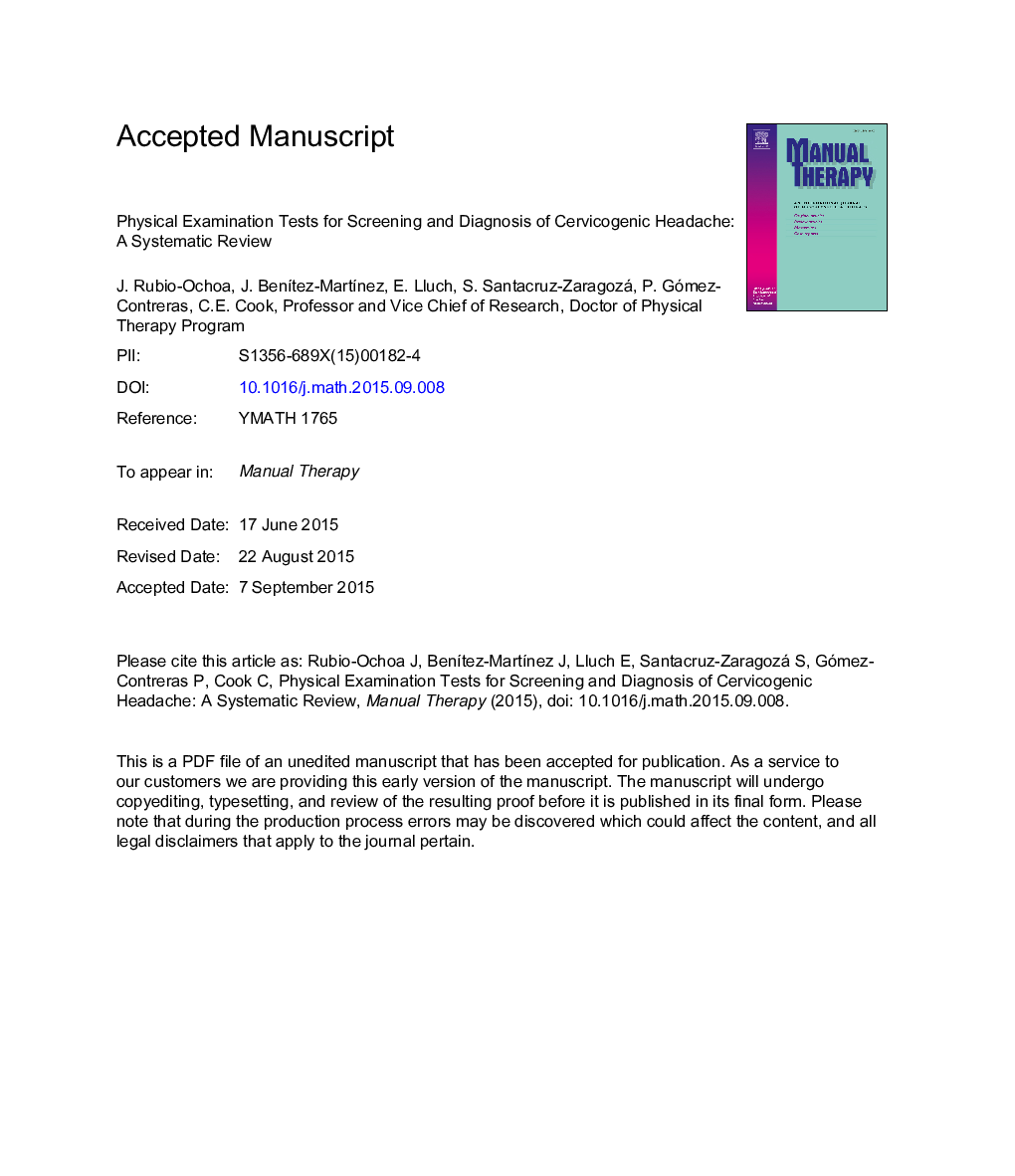| Article ID | Journal | Published Year | Pages | File Type |
|---|---|---|---|---|
| 5864571 | Manual Therapy | 2016 | 28 Pages |
Abstract
It has been suggested that differential diagnosis of headaches should consist of a robust subjective examination and a detailed physical examination of the cervical spine. Cervicogenic headache (CGH) is a form of headache that involves referred pain from the neck. To our knowledge, no studies have summarized the reliability and diagnostic accuracy of physical examination tests for CGH. The aim of this study was to summarize the reliability and diagnostic accuracy of physical examination tests used to diagnose CGH. A systematic review following PRISMA (Preferred Reporting Items for Systematic Reviews and Meta-Analyses) guidelines was performed in four electronic databases (MEDLINE, Web of Science, Embase and Scopus). Full text reports concerning physical tests for the diagnosis of CGH which reported the clinometric properties for assessment of CGH, were included and screened for methodological quality. Quality Appraisal for Reliability Studies (QAREL) and Quality Assessment of Studies of Diagnostic Accuracy (QUADAS-2) scores were completed to assess article quality. Eight articles were retrieved for quality assessment and data extraction. Studies investigating diagnostic reliability of physical examination tests for CGH scored poorer on methodological quality (higher risk of bias) than those of diagnostic accuracy. There is sufficient evidence showing high levels of reliability and diagnostic accuracy of the selected physical examination tests for the diagnosis of CGH. The cervical flexion-rotation test (CFRT) exhibited both the highest reliability and the strongest diagnostic accuracy for the diagnosis of CGH.
Related Topics
Health Sciences
Medicine and Dentistry
Complementary and Alternative Medicine
Authors
J. Rubio-Ochoa, J. BenÃtez-MartÃnez, E. Lluch, S. Santacruz-Zaragozá, P. Gómez-Contreras, C.E. Cook,
